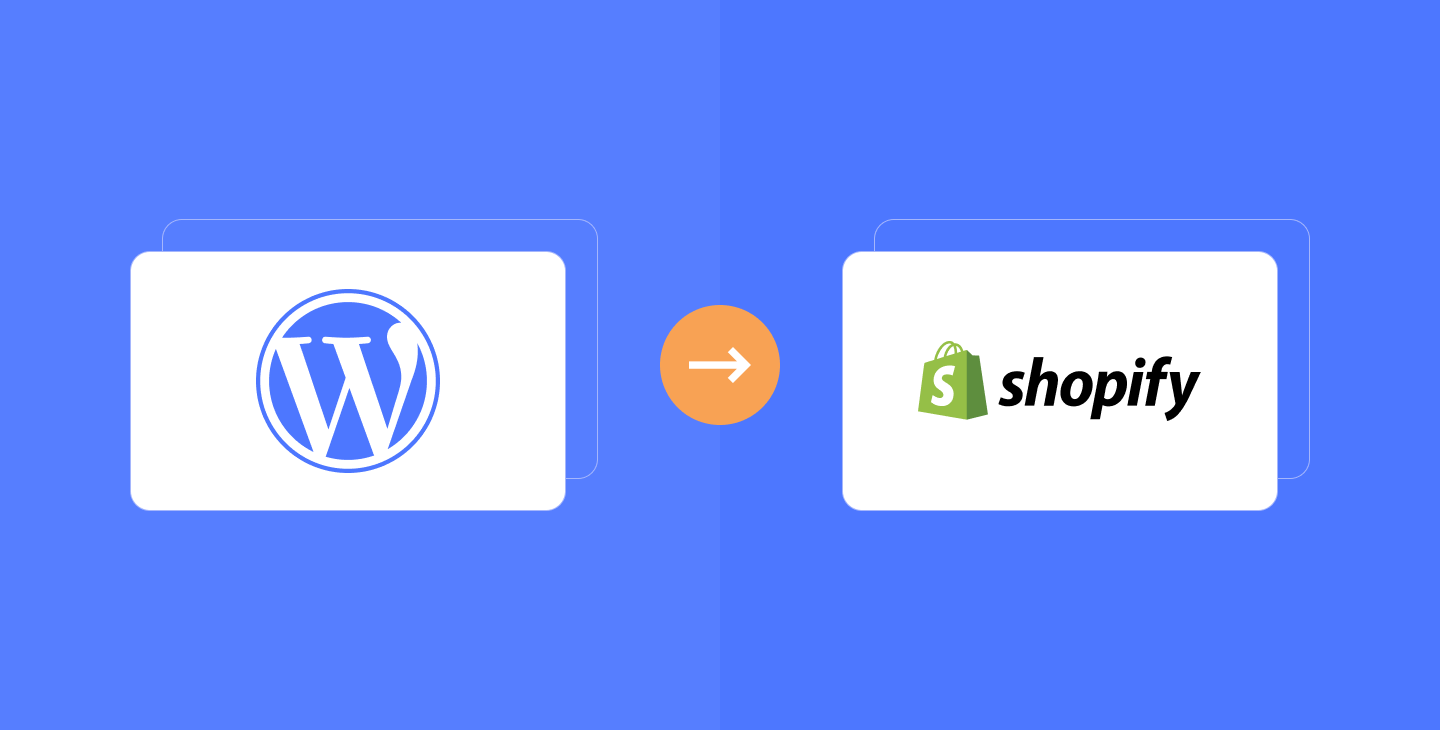
In the ever-evolving landscape of e-commerce, businesses often find themselves seeking platforms that offer more specialized features, enhanced user experience, and better scalability. If you’re currently running your online store on WordPress but are considering migrating to Shopify, you’re not alone. The transition from WordPress to Shopify can be a game-changer for your e-commerce venture, offering a range of benefits that can take your business to new heights.
Also check – Different between WordPress vs. Other CMS Platforms
Why Consider Migrating from WordPress to Shopify?
Enhanced E-Commerce Capabilities
Shopify is renowned for its e-commerce-focused features that cater to businesses of all sizes. From inventory management to customizable product listings, Shopify provides a seamless and intuitive environment for managing your online store. The platform offers a variety of templates and tools specifically designed to optimize sales and conversions.
User-Friendly Experience
Shopify simplifies the process of building and maintaining an online store. Its user-friendly interface allows you to manage products, orders, and customers with ease, even if you don’t possess advanced technical skills. This means less time spent on technical aspects and more time dedicated to growing your business.
Scalability and Performance
As your business grows, so will your e-commerce needs. Shopify’s scalability ensures that your website can handle increased traffic and transactions without compromising performance. From small startups to established enterprises, Shopify can accommodate businesses at any stage of growth.
Mobile-Optimized Design
In today’s mobile-driven world, having a responsive website is crucial. Shopify’s themes are designed to be mobile-responsive, ensuring that your store looks and functions flawlessly on various devices. This mobile optimization enhances the user experience and encourages higher conversion rates.
The Migration Process: Step by Step
Step 1: Plan and Prepare
Before initiating the migration process, it’s essential to create a comprehensive plan. Take stock of your current website’s content, products, and design elements. Identify what needs to be migrated and what can be optimized for the new platform. This is also an ideal time to research Shopify’s features and choose a plan that suits your business requirements.
Step 2: Set Up Your Shopify Store
Create a Shopify account and set up your new store. Choose a domain name that aligns with your brand and select a Shopify theme that complements your business identity. Shopify theme customization options allow you to maintain your brand’s look and feel while optimizing for e-commerce functionality.
Step 3: Data Migration
Transferring your existing content, products, and customer data from WordPress to Shopify is a critical step. Use Shopify’s import/export tools or third-party migration apps to ensure a smooth transfer. This is also an opportunity to review and update your product listings, ensuring accurate and compelling descriptions.
Step 4: Design and Customization
Customize your chosen Shopify theme to match your brand’s aesthetics and optimize the user experience. Shopify’s user-friendly interface allows you to tweak colors, fonts, layouts, and more. If needed, you can also hire a Shopify expert to assist with more complex customizations.
Step 5: Set Up Payment and Shipping
Configure your preferred payment gateways and shipping options. Shopify offers a range of payment gateways, including PayPal, Stripe, and more. You can also integrate real-time shipping rates and print shipping labels directly from the platform.
Step 6: Testing and Quality Assurance
Before launching your new Shopify store, thoroughly test all aspects of the website, including product browsing, checkout, and payment processing. Address any glitches, broken links, or design inconsistencies to ensure a seamless user experience.
Step 7: Launch and Post-Migration Steps
With everything in place and fully tested, it’s time to launch your new Shopify store. Announce the transition to your customers and guide them through any changes in the shopping experience. Keep a close eye on analytics to ensure that the migration has positively impacted sales and conversions.
Expert Tips for a Successful Migration
- Backup Your Data: Before starting the migration, create a complete backup of your WordPress website’s data. This ensures that you have a safety net in case anything goes wrong during the migration process.
- SEO Considerations: Plan for SEO optimization during the migration. Redirect your old URLs to the corresponding pages on your new Shopify site to maintain your search engine rankings.
- Test Thoroughly: Don’t rush the testing phase. Test your new Shopify store extensively to identify and fix any issues before making it live.
- Communication is Key: Keep your customers informed about the migration. Use emails, social media, and website banners to notify them about the upcoming changes.
In Conclusion
WordPress to Shopify Migration is a strategic move that can significantly enhance your e-commerce journey. Shopify’s specialized e-commerce capabilities, user-friendly interface, scalability, and mobile optimization make it an appealing choice for businesses seeking growth and success in the digital marketplace. By carefully planning the migration process, customizing your new store, and thoroughly testing its functionality, you can ensure a seamless transition that brings your brand to the forefront of e-commerce excellence.

